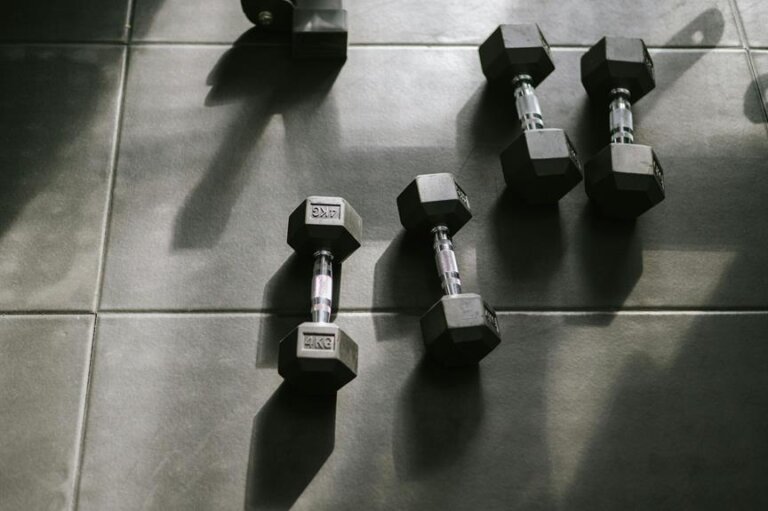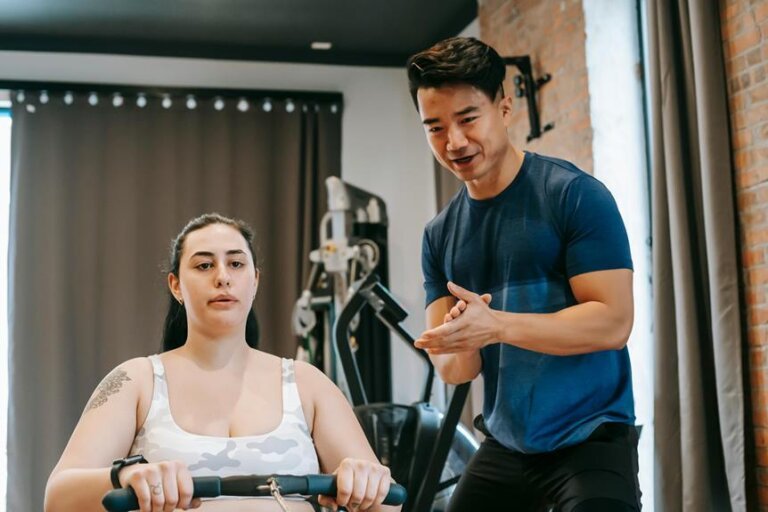Effective Fitness Tips for Older Adults Looking to Stay Active
As you navigate the golden years, it's crucial to adapt your fitness routine to maintain vitality and well-being. Exploring tailored exercises and mindful movements can significantly impact your overall health and quality of life.
By understanding the specific needs of your body and incorporating suitable physical activities, you can enhance your strength, flexibility, and endurance. But how can you ensure that your fitness regimen is not only effective but also safe and sustainable for the long haul?
Let's explore some key strategies to help you thrive in your active lifestyle journey.
Importance of Regular Exercise
Regular exercise is crucial for maintaining strength and mobility as you age. Staying active helps you retain muscle mass, bone density, and flexibility, which are essential for daily functions.
By incorporating regular physical activity into your routine, you can improve your balance and coordination, reducing the risk of falls and injuries. Exercise also enhances cardiovascular health, lowering the chances of heart-related issues.
Moreover, staying active releases endorphins, boosting your mood and reducing feelings of anxiety or depression. It's recommended to engage in a combination of aerobic activities, like walking or swimming, and strength training exercises to promote overall fitness.
Aim for at least 150 minutes of moderate-intensity exercise per week, spread out over several days. Remember to listen to your body and consult with a healthcare provider before starting any new exercise regimen, especially if you have pre-existing health conditions.
Stay committed to your fitness goals, and enjoy the numerous benefits that regular exercise can bring to your life.
Incorporating Strength Training
To effectively incorporate strength training into your fitness routine, consider starting with bodyweight exercises. Bodyweight exercises like squats, lunges, push-ups, and planks are great for building muscle and improving overall strength. These exercises use your own body weight as resistance, making them accessible and effective for older adults looking to stay active.
As you progress with bodyweight exercises and start to feel more confident, you can gradually incorporate resistance bands or light dumbbells to increase the intensity of your strength training routine. Focus on performing each exercise with proper form to prevent injuries and maximize the benefits.
It's important to listen to your body and start at a level that's comfortable for you. Don't push yourself too hard too soon. Consistency is key when it comes to strength training, so aim to include these exercises in your routine at least two to three times a week.
Benefits of Flexibility Exercises
Flexibility exercises play a crucial role in enhancing your overall mobility and range of motion as you age. By incorporating flexibility exercises into your fitness routine, you can improve your ability to perform daily activities with ease and reduce the risk of injuries. These exercises focus on stretching and lengthening your muscles, allowing you to maintain flexibility and prevent stiffness in your joints.
One of the key benefits of flexibility exercises is improved posture. As we age, our muscles tend to become tighter, leading to poor posture. Engaging in regular flexibility exercises can help counteract this by loosening tight muscles and promoting better alignment. Additionally, flexibility exercises can enhance your balance and coordination, reducing the likelihood of falls.
Moreover, flexibility exercises contribute to better circulation and increased blood flow to your muscles, promoting overall joint health. They also help alleviate aches and pains associated with stiff muscles. By incorporating these exercises into your fitness routine, you can maintain your independence and enjoy a higher quality of life as you age.
Cardiovascular Activities for Seniors
Engage in heart-healthy exercises tailored for seniors to boost your cardiovascular fitness and overall well-being. Cardiovascular activities are crucial for maintaining a healthy heart and improving circulation.
Walking is a fantastic low-impact exercise that gets your heart rate up without putting too much strain on your joints. Aim for at least 30 minutes of brisk walking most days of the week.
Swimming is another excellent option that's gentle on the joints while providing a full-body workout. Consider joining a water aerobics class for added fun and social interaction.
Cycling, whether outdoors or on a stationary bike, is a great way to improve cardiovascular health. It's easy on the joints and allows you to control the intensity of your workout.
Dancing isn't only a fun way to stay active but also offers cardiovascular benefits. Look for dance classes designed for seniors to groove to the music while boosting your heart health.
Remember to consult with your healthcare provider before starting any new exercise routine to ensure it aligns with your health needs.
Mind-Body Connection in Fitness
When you focus on the mind-body connection in fitness, you can experience benefits like improved mindfulness and enhanced brain health.
By combining exercise with mental awareness, you can boost your overall well-being and cognitive function.
Embracing this holistic approach to fitness can lead to a more balanced and fulfilling lifestyle as you age.
Benefits of Mindfulness
Enhance your fitness journey by harnessing the power of mindfulness to strengthen the connection between your mind and body.
Mindfulness involves being fully present and aware of your thoughts, feelings, and bodily sensations. By practicing mindfulness during exercise, you can improve your focus, form, and overall workout experience. This heightened awareness can help prevent injuries by allowing you to listen to your body's signals and adjust accordingly.
Additionally, mindfulness can reduce stress and anxiety, promoting a more positive mindset towards fitness. It also enhances your mind-body coordination, allowing for smoother movements and better control during exercises.
Incorporating mindfulness into your fitness routine can lead to a more holistic approach to health and well-being as you age.
Exercise for Brain Health
Strengthening the mind-body connection through exercise is crucial for maintaining brain health as you age. Physical activity not only benefits your body but also has a significant impact on your cognitive function.
When you engage in exercises like aerobics, yoga, or even brisk walking, you boost blood flow to the brain, which can enhance memory and overall cognitive abilities. Regular workouts stimulate the release of chemicals that support brain cell growth and connectivity, leading to improved mental sharpness and focus.
Additionally, exercise can reduce the risk of developing conditions like dementia and Alzheimer's disease. By prioritizing physical activity as part of your routine, you're actively investing in a healthier brain and a sharper mind for the long run.
Nutrition Tips for Active Aging
To maintain your energy levels and overall health as you age, focus on incorporating nutrient-dense foods into your daily meals. Opt for a balanced diet rich in fruits, vegetables, whole grains, lean proteins, and healthy fats. These foods provide essential vitamins, minerals, and antioxidants that support your immune system, help with muscle recovery, and promote heart health.
As you age, it's crucial to pay attention to your protein intake to support muscle strength and function. Include sources like lean meats, poultry, fish, eggs, dairy, legumes, and nuts in your meals. Additionally, staying hydrated is key for digestion, nutrient absorption, and joint health. Drink an adequate amount of water throughout the day, and consider hydrating snacks like fruits and vegetables.
Limit processed foods, sugary treats, and excessive salt and saturated fats, as they can contribute to inflammation and chronic conditions. By making mindful choices and prioritizing nutrient-rich foods, you can fuel your body effectively for an active and healthy lifestyle.
Hydration and Its Role in Fitness
Staying well-hydrated is essential for maintaining optimal fitness levels as you age. Hydration plays a crucial role in supporting various bodily functions, especially during exercise. Dehydration can lead to decreased energy levels, muscle cramps, and even dizziness, making it harder for you to stay active and reach your fitness goals.
As an older adult, it's important to pay close attention to your fluid intake before, during, and after physical activity. Aim to drink water regularly throughout the day, not just when you feel thirsty. During exercise, hydrate with small, frequent sips to maintain proper hydration levels. Remember that as you age, your body may not signal thirst as effectively, so make a conscious effort to drink an adequate amount of water.
In addition to water, consider incorporating hydrating foods like fruits and vegetables into your diet. These can contribute to your overall fluid intake and provide essential nutrients to support your fitness endeavors. By prioritizing hydration, you can enhance your exercise performance, support your body's recovery process, and enjoy an active lifestyle for years to come.
Safety Precautions for Older Adults
When exercising, it's crucial for you to focus on your balance and stability to prevent falls.
Make sure you use proper equipment correctly to avoid injuries.
Always begin your workout with a proper warm-up routine to prepare your body for the activities ahead.
Balance and Stability
Maintaining good balance and stability is crucial for older adults to prevent falls and injuries. To enhance your balance, incorporate exercises like standing on one leg or heel-to-toe walking into your routine.
Additionally, practicing yoga or tai chi can improve your stability and overall coordination. When working on balance exercises, ensure you have a sturdy chair or wall nearby for support if needed.
Focus on maintaining proper posture and engaging your core muscles to help stabilize your body. It's important to start slowly and gradually increase the intensity to avoid overexertion.
Proper Equipment Usage
To ensure your safety and maximize the benefits of your fitness routine as an older adult, it's important to use proper equipment and follow safety precautions diligently.
When selecting equipment, opt for pieces that are specifically designed for older adults or those with modifications for stability and ease of use. Make sure to adjust the equipment to your body size and capabilities to prevent injuries.
Always wear appropriate footwear with good grip to avoid slips and falls. Additionally, remember to inspect equipment regularly for any signs of wear and tear, and replace or repair as needed.
Warm-Up Routines
For older adults, incorporating a proper warm-up routine is essential to prevent injuries and prepare your body for exercise. Before starting your workout, spend 5-10 minutes doing light aerobic activities like walking or cycling to increase blood flow to your muscles. Include dynamic stretches that mimic the movements you'll be doing during your workout, such as arm circles, leg swings, and hip rotations.
Focus on loosening up your joints and gradually increasing your range of motion. Remember to listen to your body and avoid pushing yourself too hard during the warm-up. This preparation will help improve your performance, reduce the risk of strains or sprains, and make your workout more effective overall.
Frequently Asked Questions
Can Older Adults Still Participate in High-Intensity Interval Training (Hiit) Exercises?
Yes, you can absolutely tackle high-intensity interval training (HIIT) exercises as an older adult! Push yourself safely, listen to your body, and gradually increase intensity. HIIT can boost your fitness levels and keep you feeling strong and energized.
How Can Older Adults Safely Incorporate Balance Training Into Their Fitness Routine?
To safely incorporate balance training into your routine, start with simple exercises like standing on one leg or heel-to-toe walks. Gradually increase difficulty by adding instability tools like balance pads. Remember to prioritize safety and listen to your body.
Are There Specific Recommendations for Older Adults With Chronic Conditions, Such as Arthritis or Osteoporosis, When It Comes to Exercise?
If you have chronic conditions like arthritis or osteoporosis, consult a healthcare provider for personalized exercise recommendations. Modify activities to suit your needs. For example, try low-impact exercises like swimming or tai chi to improve strength and flexibility.
What Are Some Ways for Older Adults to Stay Motivated and Consistent With Their Fitness Routine?
To stay motivated and consistent with your fitness routine, set realistic goals, mix up your activities, find a workout buddy, track your progress, reward yourself, and remember to enjoy the process. Stay positive and keep moving!
Are There Any Specific Recommendations for Older Adults Who Are New to Fitness and Looking to Start a Workout Regimen?
Dive into your fitness journey with a sense of adventure. Begin by gradually incorporating movement into your routine. Listen to your body, stay hydrated, and celebrate small victories. Consistency over intensity will set you up for success.
Conclusion
So, there you have it – some effective fitness tips for older adults looking to stay active and healthy.
Remember, staying active is the key to feeling young and vibrant!
Don't let age hold you back from living your best life.
Keep moving, keep challenging yourself, and keep pushing your limits.
You're never too old to start, so why not start today and see the amazing benefits that regular exercise can bring to your life!





